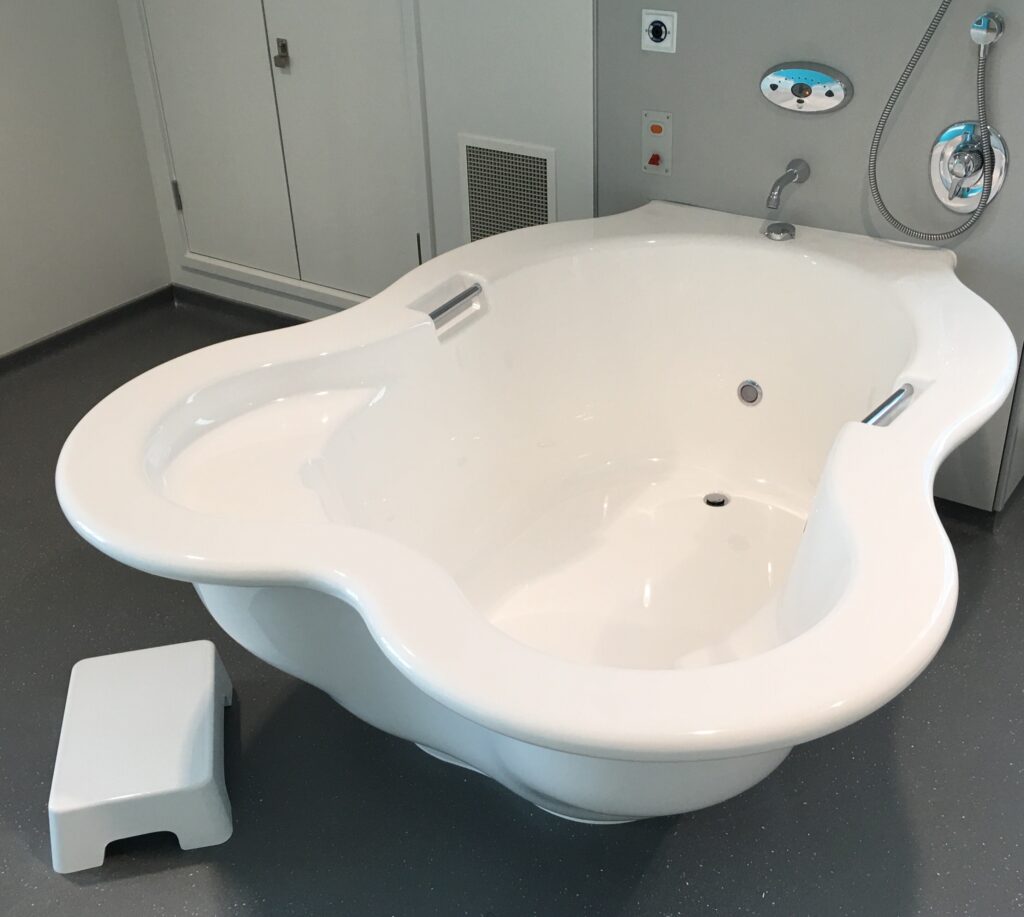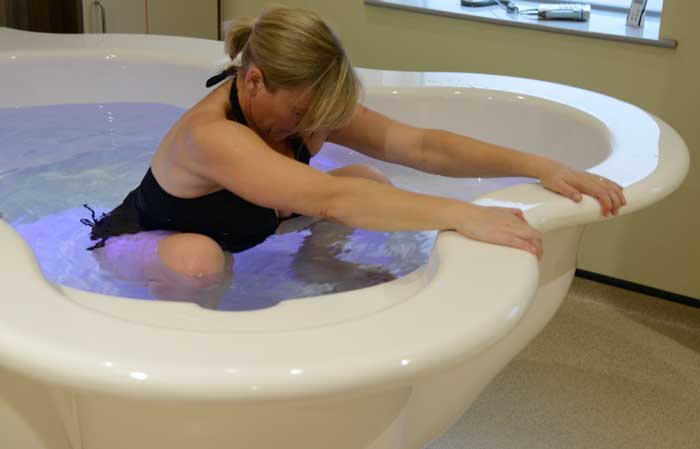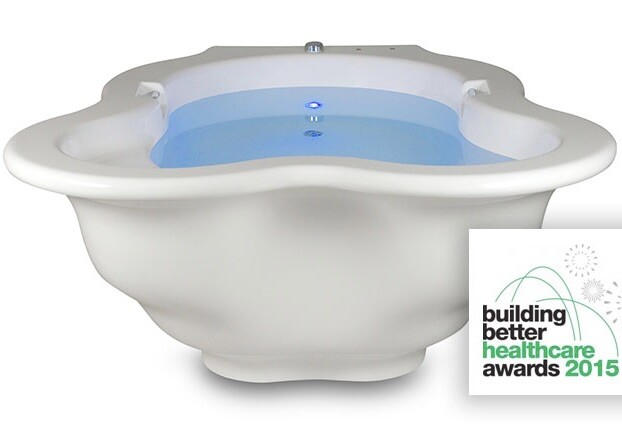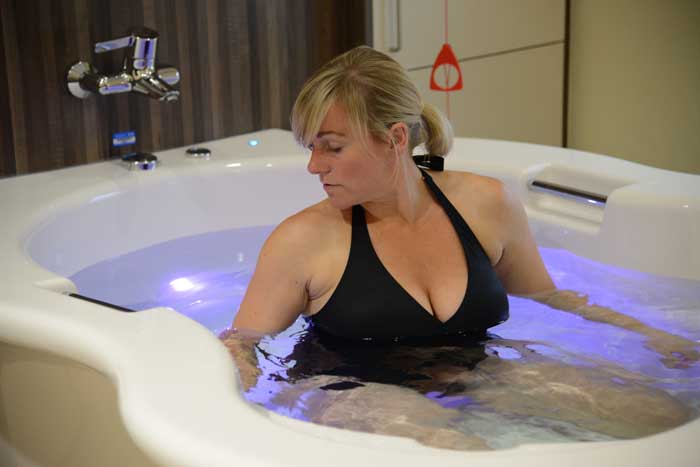The use of water birth pools has gained popularity in recent years as expectant mothers seek alternatives that enhance the natural birthing experience.
One of the key factors contributing to the success of water births is the warm water in the birthing pool, creating an environment that encourages the release of oxytocin.
Often referred to as the “love hormone” or “bonding hormone,” oxytocin plays a crucial role in the progression of labour and the overall well-being of both mother and baby.

Understanding Oxytocin:
Oxytocin, produced by the hypothalamus and released by the pituitary gland, is a hormone known for its role in promoting social bonding, emotional connection, and uterine contractions during childbirth.
It is often associated with feelings of love, trust, and intimacy, and its presence is pivotal in the birthing process.
The Warm Water Effect:
Pain Relief and Relaxation: Warm water has inherent therapeutic properties, and when a laboring woman immerses herself in a water birth pool, the comforting embrace of warm water contributes to pain relief and relaxation.
The buoyancy of water alleviates the pressure on the body, reducing muscle tension and creating an environment conducive to calmness.
As the mother relaxes, the body is more apt to release oxytocin, facilitating the progression of labor.
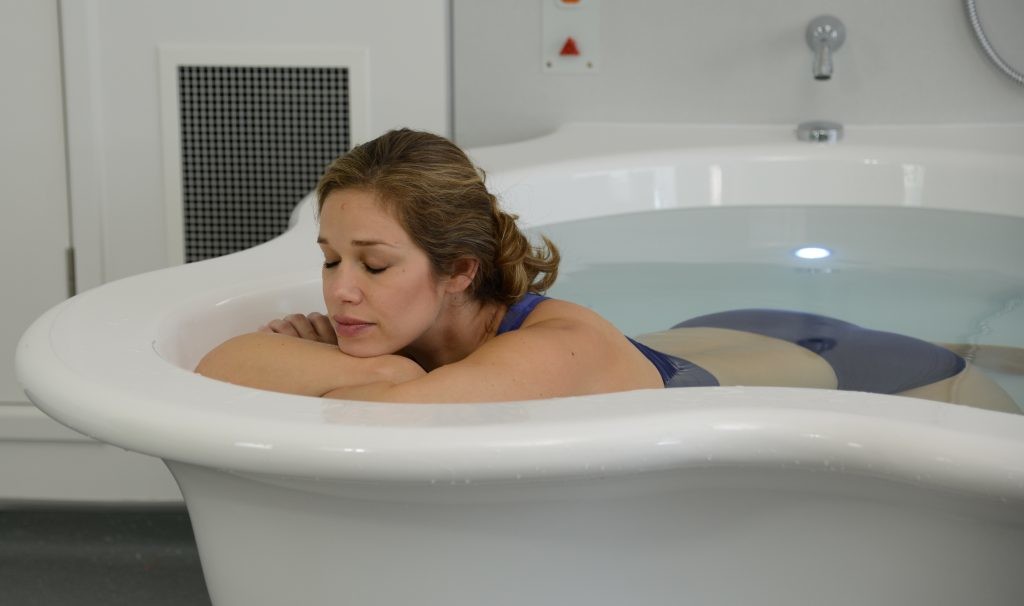
Enhancing Blood Circulation:
The warm water in water birth pools promotes vasodilation, leading to improved blood circulation.
This enhanced blood flow is particularly beneficial during childbirth, as it ensures that the uterus receives an adequate supply of oxygen and nutrients.
The improved circulation helps in optimizing uterine contractions and, subsequently, the release of oxytocin.
Reducing Stress Hormones:
Warm water has a natural ability to decrease the production of stress hormones, such as cortisol.
By creating a serene and comfortable environment, the water birth pool minimizes the stress response, allowing the body to focus on the release of oxytocin.
This reduction in stress hormones supports a positive birthing experience and contributes to the mother’s overall well-being.
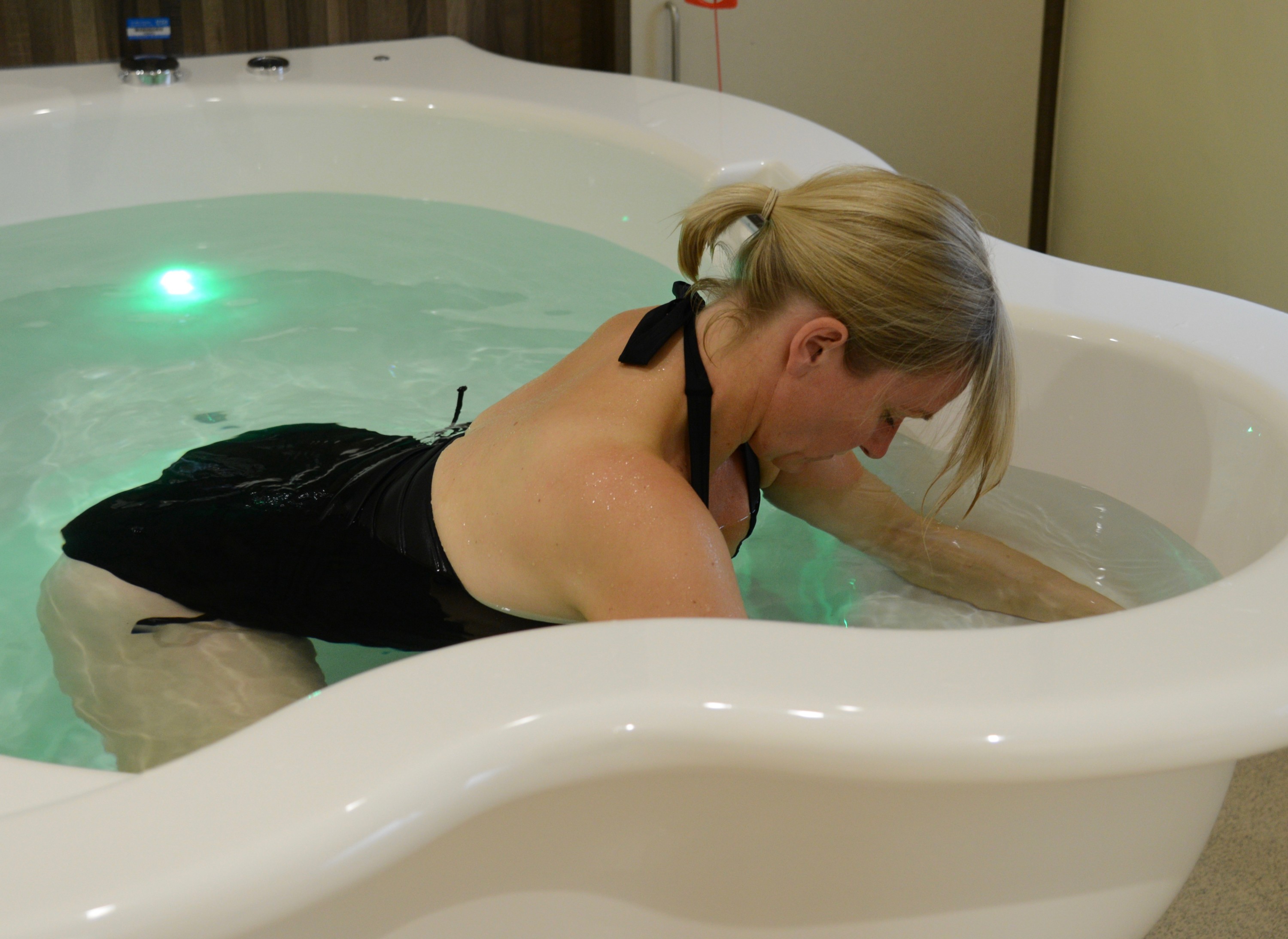
Facilitating the Bonding Process:
Oxytocin is not only crucial for uterine contractions but also plays a vital role in the bonding between mother and baby.
The warm water in the birthing pool promotes the release of oxytocin, fostering a sense of intimacy and connection between the mother and her newborn.
This early bonding experience can have lasting positive effects on the emotional well-being of both mother and child.
Promoting a Positive Birth Environment:
The warm water in water birth pools contributes to the creation of a positive and supportive birthing environment.
This positive ambiance, coupled with the physiological effects of warm water, enhances the mother’s overall experience, making her more receptive to the natural release of oxytocin.
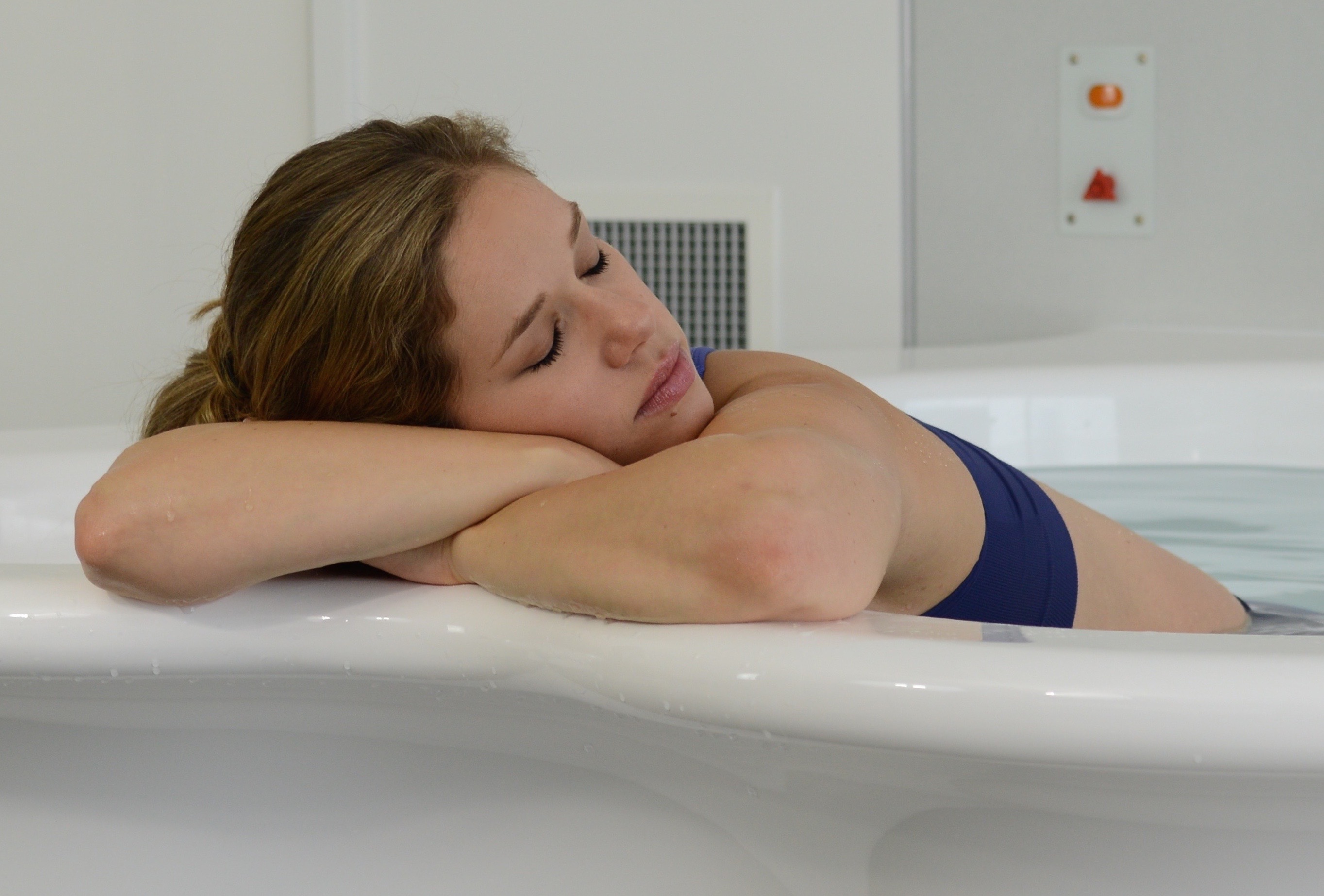
Conclusion:
The warm water in water birth pools serves as a nurturing medium that promotes the natural release of oxytocin, enriching the childbirth experience for expectant mothers.
As healthcare providers and birthing centers continue to recognize the benefits of water immersion during labor, understanding the interplay between warm water and oxytocin release becomes essential.
By harnessing the therapeutic properties of warm water, the journey through childbirth becomes not only more comfortable but also profoundly connected, nurturing the beautiful bond between mother and baby.


